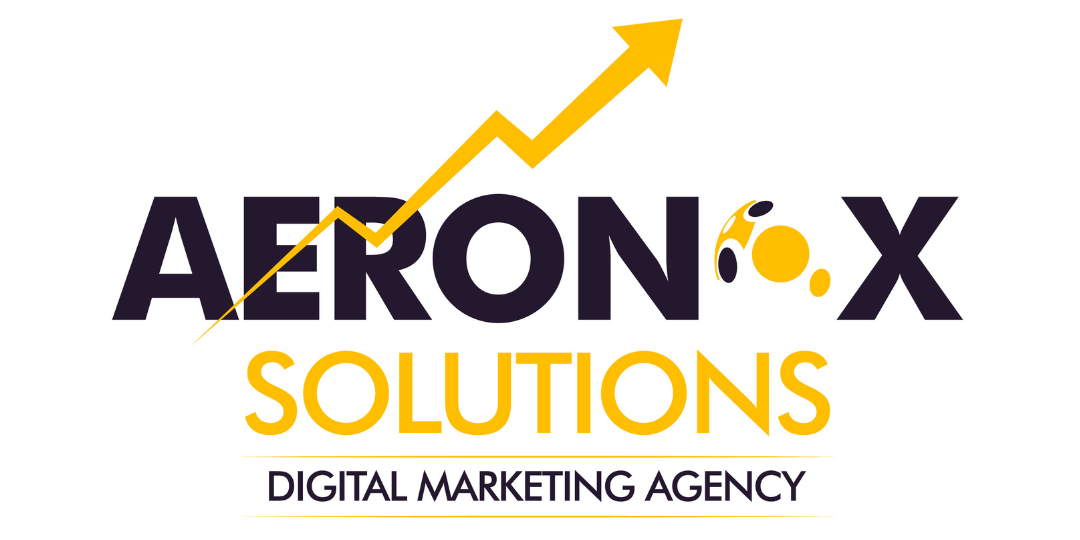In today’s competitive business landscape, call centers play a crucial role in shaping customer experiences and driving sales. However, the challenges are undeniable, long wait times, frustrated customers, high agent turnover, and outdated systems often hinder performance. For businesses, these inefficiencies don’t just impact customer satisfaction; they directly affect the bottom line.
How to run a successful call center? 20+Proven Call Center Strategies

The good news? With the right strategies, call centers can transform into powerful engines for boosting sales and fostering loyalty. By focusing on successful call center strategies, businesses can streamline operations, empower agents, and deliver exceptional customer experiences that drive revenue growth. Let’s explore how optimizing your call center can turn challenges into opportunities and create a win-win for both customers and your team.
Call Center Evaluation: A Roadmap to Improvement
Before diving into call center best practices, it’s essential to assess your current operations to identify strengths, weaknesses, and areas for improvement. A thorough evaluation helps you understand what’s working, what’s not, and where to focus your efforts. While every call center is unique, asking key questions can provide valuable insights:
– How many calls are needed to resolve a customer’s issue?
– What’s the average wait time before a customer connects with an agent?
– Do we follow up with customers to measure their satisfaction after each interaction?
– Is our technology helping agents succeed, or are they working around its limitations?
– Are self-service options available and effective for customers?
– Are customers generally satisfied with their call center experience?
– Are agents content with their work environment and tools?
These questions can be customized to align with your organization’s specific goals, ensuring a clear picture of your call center’s performance. Even if your evaluation reveals that your operations are running smoothly, there’s always room to grow. Moreover, you have to staying updated on the latest trends and best practices ensures your call center remains efficient, customer-focused, and ready to adapt to changing demands.
1. Invest in Agent Training
Well-trained agents are the foundation of a successful call center. Comprehensive training programs should cover product knowledge, communication skills, and problem-solving techniques. Role-playing exercises and real-life scenarios help agents practice handling challenging situations. Ongoing training ensures agents stay updated on new tools and processes, enabling them to deliver confident and accurate support. A skilled agent not only resolves issues faster but also creates a positive customer experience.
Key Points:
-
- Cover product knowledge, communication, and conflict resolution.
- Use role-playing and real-life scenarios for practice.
- Provide ongoing training to keep agents updated.
- Skilled agents improve first call resolution (FCR) and customer satisfaction.
2. Leverage Advanced Technology

Modern call centers rely on technology to streamline operations and enhance customer interactions. AI-powered chatbots handle routine queries, freeing agents for complex issues. CRM systems store customer data, enabling personalized support. Call routing software ensures customers are connected to the right agent quickly. Investing in the right tools improves efficiency, reduces wait times, and delivers a seamless customer experience.
Key Points:
-
- Use AI chatbots for routine queries.
- Implement CRM systems for personalized interactions.
- Optimize call routing to reduce wait times.
- Technology enhances efficiency and customer satisfaction.
3. Implement Self-Service Options
Self-service options empower customers to resolve simple issues independently. FAQs, knowledge bases, and IVR systems provide quick solutions without agent intervention. This reduces call volume, shortens wait times, and improves customer satisfaction. Offering self-service options also allows agents to focus on more complex queries, enhancing overall efficiency.
Key Points:
-
- Provide FAQs, knowledge bases, and IVR systems.
- Reduce call volume and wait times.
- Empower customers to find solutions quickly.
- Free up agents for complex issues.
4. Monitor Call Metrics

Tracking key performance indicators (KPIs) like average handle time (AHT), first call resolution (FCR), and customer satisfaction (CSAT) provides valuable insights into call center performance. Regularly analyzing these metrics helps identify bottlenecks, measure agent performance, and implement targeted improvements. Data-driven decisions ensure continuous growth and better customer experiences.
Key Points:
-
- Track AHT, FCR, and CSAT.
- Identify bottlenecks and inefficiencies.
- Measure agent performance.
- Use data to drive improvements.
5. Focus on First Call Resolution (FCR)
Resolving customer issues in a single interaction is a hallmark of excellent service. High FCR rates reduce repeat calls, lower operational costs, and boost customer satisfaction. Train agents to ask the right questions, actively listen, and provide comprehensive solutions during the first call. This not only saves time but also strengthens customer trust and loyalty.
Key Points:
-
- Aim to resolve issues in one interaction.
- Reduce repeat calls and operational costs.
- Train agents to ask the right questions.
- Improve customer satisfaction and loyalty.
6. Optimize Call Routing
Intelligent call routing ensures customers are connected to the most qualified agent based on their needs. This reduces wait times, improves issue resolution, and enhances the customer experience. For example, a billing inquiry can be routed to an agent specializing in financial matters. Efficient call routing ensures customers get the right help quickly.
Key Points:
-
- Route calls to the most qualified agent.
- Reduce wait times and improve resolution rates.
- Enhance customer experience.
- Use data to optimize routing algorithms.
7. Prioritize Customer Feedback
Customer feedback is a treasure trove of insights. Regularly collect feedback through surveys, post-call reviews, or social media. Analyze this data to identify trends, address pain points, and make informed decisions to improve service quality. Listening to customers shows you value their opinions and are committed to continuous improvement.
Key Points:
-
- Collect feedback through surveys and reviews.
- Identify trends and pain points.
- Make data-driven improvements.
- Show customers their opinions matter.
8. Offer Multichannel Support
Customers expect support across multiple channels—phone, email, chat, social media, and more. A seamless omnichannel experience ensures customers can switch between channels without losing context. This enhances convenience, improves satisfaction, and builds stronger customer relationships. Meeting customers where they are is key to delivering exceptional service.
Key Points:
-
- Provide support across phone, email, chat, and social media.
- Ensure seamless transitions between channels.
- Enhance convenience and satisfaction.
- Build stronger customer relationships.
9. Reduce Wait Times

Long wait times frustrate customers and damage brand reputation. Implement callback options, optimize staffing schedules, and use predictive analytics to anticipate call volumes. These steps ensure customers are connected to agents quickly, improving their overall experience. Reducing wait times shows customers their time is valued.
Key Points:
-
- Offer callback options.
- Optimize staffing schedules.
- Use predictive analytics to forecast call volumes.
- Show customers their time matters.
READ ALSO: Best Lead Generation Techniques That Works in 2025
10. Foster a Positive Work Environment
A happy agent delivers better service. Create a supportive workplace by encouraging teamwork, recognizing achievements, and providing a comfortable workspace. Regular team-building activities and open communication channels can boost morale and reduce turnover. A positive work environment leads to happier agents and better customer interactions.
Key Points:
-
- Encourage teamwork and recognition.
- Provide a comfortable workspace.
- Organize team-building activities.
- Reduce turnover and boost morale.
11. Use Gamification
Gamification turns work into a fun and motivating experience. Introduce leaderboards, badges, and rewards for achieving targets like high CSAT scores or quick call resolutions. This fosters healthy competition, keeps agents engaged, and improves overall performance. Gamification not only boosts productivity but also creates a sense of accomplishment among agents.
Key Points:
-
- Use leaderboards, badges, and rewards.
- Foster healthy competition.
- Keep agents engaged and motivated.
- Improve productivity and performance.
12. Provide Career Development Opportunities
Agents are more likely to stay if they see a future in the organization. Offer training programs, mentorship, and clear career progression paths. This not only retains talent but also ensures a skilled and motivated workforce. Investing in career development shows agents they are valued and have room to grow.
Key Points:
-
- Offer training and mentorship programs.
- Provide clear career progression paths.
- Retain top talent.
- Build a skilled and motivated workforce.
13. Regularly Update Systems
Outdated systems slow down operations and frustrate both agents and customers. Regularly update software, hardware, and tools to ensure smooth functioning. Modern systems improve efficiency, reduce downtime, and enhance the customer experience. Staying up-to-date with technology ensures your call center remains competitive.
Key Points:
-
- Update software and hardware regularly.
- Improve efficiency and reduce downtime.
- Enhance customer and agent experiences.
- Stay competitive with modern tools.
14. Personalize Customer Interactions
Customers value personalized service. Use CRM data to address customers by name, reference past interactions, and tailor solutions to their needs. Personalization builds trust, strengthens customer relationships, and makes interactions more meaningful. A personalized touch can turn a routine call into a memorable experience.
Key Points:
-
- Use CRM data for personalized interactions.
- Address customers by name and reference past interactions.
- Tailor solutions to individual needs.
- Build trust and strengthen relationships.
15. Implement Quality Assurance Programs
Quality assurance (QA) programs ensure consistent service standards. Regularly review calls, emails, and chats to assess agent performance. Provide constructive feedback and coaching to help agents improve. QA programs not only maintain high service quality but also identify training needs and areas for improvement.
Key Points:
-
- Regularly review customer interactions.
- Provide constructive feedback and coaching.
- Maintain high service standards.
- Identify training needs and areas for improvement.
16. Encourage Proactive Support
Proactive support involves anticipating customer needs and addressing issues before they escalate. Train agents to identify potential problems and offer solutions in advance. For example, if a customer’s subscription is about to expire, agents can proactively remind them and offer renewal options. Proactive support enhances customer satisfaction and builds trust.
Key Points:
-
- Anticipate customer needs.
- Address issues before they escalate.
- Offer solutions in advance.
- Build trust and enhance satisfaction.
17. Optimize Staffing Levels
Aligning staffing with call volume patterns is crucial for efficiency. Use workforce management tools to forecast demand and schedule agents accordingly. This ensures adequate coverage during peak times and reduces idle time during lulls. Proper staffing levels improve customer wait times and agent productivity.
Key Points:
-
- Use workforce management tools.
- Forecast demand and schedule agents.
- Ensure adequate coverage during peak times.
- Improve customer wait times and agent productivity.
18. Focus on Emotional Intelligence
Agents with high emotional intelligence (EQ) can handle difficult customers with empathy and patience. Train agents to recognize and manage their emotions, actively listen, and respond calmly to frustrated customers. High EQ improves customer satisfaction, reduces escalations, and creates a positive interaction for both parties.
Key Points:
-
- Train agents in emotional intelligence.
- Encourage active listening and empathy.
- Handle difficult customers calmly.
- Improve satisfaction and reduce escalations.
19. Streamline Internal Processes
Complex workflows slow down operations and frustrate agents. Simplify processes by eliminating unnecessary steps, automating repetitive tasks, and providing clear guidelines. Streamlined processes improve efficiency, reduce agent burnout, and ensure a smoother customer experience. Simplifying workflows allows agents to focus on what matters most—helping customers.
Key Points:
-
- Eliminate unnecessary steps.
- Automate repetitive tasks.
- Provide clear guidelines.
- Improve efficiency and reduce burnout.
20. Offer Incentives for High Performance

Rewarding top-performing agents boosts morale and motivates the entire team. Offer bonuses, recognition, or other incentives for achieving targets like high CSAT scores or quick call resolutions. Publicly acknowledging achievements fosters a culture of excellence and encourages healthy competition.
Key Points:
-
- Reward top performers with bonuses or recognition.
- Motivate the entire team.
- Foster a culture of excellence.
- Encourage healthy competition.
21. Use Predictive Analytics

Predictive analytics uses historical data to forecast call volumes, customer behavior, and trends. This enables proactive decision-making, such as adjusting staffing levels or launching targeted marketing campaigns. Predictive analytics helps stay ahead of customer needs and industry trends, ensuring your call center is always prepared.
Key Points:
-
- Use historical data to forecast trends.
- Adjust staffing levels proactively.
- Launch targeted campaigns.
- Stay ahead of customer needs.
22. Build a Knowledge-Sharing Culture
Encouraging agents to share tips, best practices, and insights fosters continuous learning. Create platforms like internal forums or regular team meetings for knowledge exchange. A collaborative environment improves collective performance and ensures agents are always learning from each other.
Key Points:
-
- Encourage agents to share tips and insights.
- Create platforms for knowledge exchange.
- Foster continuous learning.
- Improve collective performance.
23. Regularly Review and Update Scripts
Call scripts should be clear, concise, and aligned with current customer needs and business goals. Regularly review and update scripts to ensure they remain relevant and effective. Flexible scripts allow agents to adapt to unique customer situations, ensuring a more natural and personalized interaction.
Key Points:
-
- Keep scripts clear and concise.
- Align scripts with customer needs and business goals.
- Regularly review and update scripts.
- Allow flexibility for personalized interactions.
24. Emphasize Continuous Improvement
The call center landscape is constantly evolving. Regularly assess and refine processes, tools, and strategies to stay ahead of industry trends and customer expectations. Encourage a culture of innovation and adaptability to ensure your call center remains competitive and customer-focused.
Key Points:
-
- Regularly assess and refine processes.
- Stay ahead of industry trends.
- Encourage innovation and adaptability.
- Remain competitive and customer-focused.
25. Celebrate Successes
Recognizing and celebrating team achievements boosts morale and fosters a sense of accomplishment. Whether it’s hitting a performance target or receiving positive customer feedback, celebrations strengthen team cohesion and motivate agents to continue delivering exceptional service.
Key Points:
-
- Recognize and celebrate achievements.
- Boost morale and motivation.
- Strengthen team cohesion.
- Encourage a culture of excellence.
By implementing these strategies, your call center can deliver exceptional customer experiences, improve agent satisfaction, and drive business growth. Each strategy is designed to address specific challenges and opportunities, ensuring your call center operates at its full potential.
6 KPIs to Monitor in the Call Center

1. First Call Resolution (FCR)
Measures the percentage of customer issues resolved during the first interaction.
- Why it matters: High FCR reduces repeat calls, lowers costs, and boosts customer satisfaction.
- Ideal target: 70-80%.
2. Average Handle Time (AHT)
Tracks the average duration of a call, including hold time, talk time, and after-call work.
- Why it matters: Balancing speed and quality ensures efficient service without rushing customers.
- Ideal target: 6-8 minutes (varies by industry).
3. Customer Satisfaction (CSAT)
Measures how satisfied customers are with the service they received.
- Why it matters: Direct feedback helps identify areas for improvement and ensures customer loyalty.
- Ideal target: 85-90%.
4. Net Promoter Score (NPS)
Assesses customer loyalty by asking how likely they are to recommend your service.
- Why it matters: NPS reflects overall customer experience and brand perception.
- Ideal target: Above 50 (on a scale of -100 to 100).
5. Call Abandonment Rate
Tracks the percentage of callers who hang up before reaching an agent.
- Why it matters: High abandonment rates indicate long wait times or poor call routing.
- Ideal target: Below 5%.
6. Agent Occupancy Rate
Measures the percentage of time agents spend handling calls versus idle time.
- Why it matters: Ensures optimal productivity without overworking agents.
- Ideal target: 80-90%.
These KPIs provide a clear picture of your call center’s performance, helping you identify strengths, weaknesses, and areas for improvement. Regularly monitoring them ensures you stay on track to deliver exceptional customer experiences.
Future Trends in Call Center Strategies

1. AI and Automation Take Center Stage
Artificial Intelligence (AI) and automation are transforming call centers by handling repetitive tasks and enhancing customer interactions. AI-powered chatbots and virtual assistants can manage routine queries like balance checks, appointment scheduling, or FAQs, freeing up human agents for more complex issues. Automation tools streamline workflows, such as auto-filling customer information or routing calls to the right department, reducing wait times and improving efficiency.
- Why it matters: AI and automation reduce operational costs, improve response times, and provide 24/7 support.
Examples:
-
- Chatbots resolving common customer queries instantly.
- Automated call routing based on customer history or issue type.
- Predictive analytics identifying trends and anticipating customer needs.
Impact: Faster resolutions, happier customers, and more efficient operations.
2. Hyper-Personalization

Customers no longer want generic responses, they expect tailored experiences. Hyper-personalization uses data analytics, AI, and CRM systems to deliver highly customized interactions. Agents can access detailed customer profiles, including past purchases, preferences, and interaction history, allowing them to provide solutions that feel personal and relevant.
- Why it matters: Personalized interactions build stronger customer relationships and increase loyalty.
Examples:
-
- Addressing customers by name and referencing past interactions.
- Recommending products or services based on purchase history.
- Sending personalized follow-up messages after a support call.
Impact: Higher customer satisfaction, increased sales, and improved brand loyalty.
3. Omnichannel Integration
Omnichannel call centers provide a seamless experience across multiple communication channels—phone, email, chat, social media, SMS, and more. Customers can start a conversation on one channel and continue it on another without losing context. Unified platforms ensure that all customer interactions are logged and accessible, enabling agents to provide consistent and efficient support.
- Why it matters: Customers expect flexibility and convenience. Omnichannel integration meets them where they are.
Examples:
-
- A customer starting a chat on your website and continuing the conversation via email.
- Social media inquiries being handled by the same agent who assisted via phone.
- SMS notifications with follow-up details after a support call.
Impact: Improved customer satisfaction, reduced frustration, and higher engagement rates.
4. Focus on Emotional Intelligence (EQ)
As AI handles routine tasks, human agents will focus on complex, emotionally charged interactions. Emotional intelligence (EQ) training equips agents to handle difficult customers with empathy, patience, and active listening. Agents with high EQ can de-escalate tense situations, build rapport, and leave customers feeling valued.
- Why it matters: Emotional intelligence improves customer satisfaction and reduces escalations.
Examples:
-
- Agents using empathetic language to calm frustrated customers.
- Active listening to understand the root cause of a problem.
- Training programs that teach agents to recognize and manage their own emotions.
Impact: Stronger customer relationships, fewer complaints, and a more positive brand image.
Why These Trends Are Game-Changers:
- AI and Automation: Saves time, reduces costs, and ensures round-the-clock support.
- Hyper-Personalization: Makes customers feel valued and understood, driving loyalty.
- Omnichannel Integration: Provides a seamless, frictionless experience across all touchpoints.
- Emotional Intelligence (EQ): Builds trust and rapport, turning challenging interactions into positive outcomes.
By adopting these trends, call centers can future-proof their operations, meet evolving customer expectations, and stay competitive in a rapidly changing landscape. Let me know if you’d like further details on any of these trends!
READ ALSO: Top 5 Digital Marketing Trends You Can’t Ignore in 2025
How to Make Call Center Omnichannel?

An omnichannel call center is a centralized customer support system that enables businesses to interact with customers seamlessly across multiple communication platforms. Unlike traditional call centers, it integrates various channels—such as phone calls, emails, live chat, social media, SMS, and messaging apps into a single, unified interface. This approach ensures that customer interactions are consistent, personalized, and efficient, regardless of the channel they choose.
Key Features of an Omnichannel Call Center:
- Unified Platform: Integrates all communication channels into one system.
- Seamless Transitions: Allows customers to switch channels without losing context.
- Consistent Experience: Delivers uniform service across all touchpoints.
- Efficient Operations: Streamlines workflows for agents and reduces response times.
- Customer-Centric: Meets modern consumer expectations for flexibility and convenience.
This approach ensures businesses stay competitive by delivering exceptional, connected customer experiences.
1. Enable Access to Channel History
Ensure that agents can view the complete history of customer interactions across all channels. This means integrating data from phone calls, emails, live chats, social media, and more into a single, unified platform. When agents have a holistic view of a customer’s journey, they can provide personalized and context-aware support, eliminating the need for customers to repeat themselves.
- Why it matters: Improves customer satisfaction and reduces handling time.
- How to do it: Use a CRM or omnichannel platform that consolidates interaction history.
2. Link High-Utilization Channels
Identify the channels your customers use most frequently and integrate them seamlessly. For example, if live chat and phone calls are the most popular, ensure that transitions between these channels are smooth. Customers should be able to start a conversation on live chat and continue it over the phone without losing context or repeating information.
- Why it matters: Enhances customer convenience and boosts efficiency.
- How to do it: Use intelligent routing and unified platforms to connect high-traffic channels.
3. Add New Channels
Expand your communication options by adding channels that align with customer preferences and industry trends. For instance, if your customers are active on messaging apps like WhatsApp or social media platforms like Instagram, incorporate these into your support system. Offering more channels ensures you meet customers where they are, increasing engagement and satisfaction.
- Why it matters: Keeps your call center relevant and accessible.
- How to do it: Research customer preferences and invest in tools that support new channels.
Why These Strategies Work:
- Consistency: Customers receive the same level of service, no matter the channel.
- Efficiency: Agents can resolve issues faster with access to complete interaction histories.
- Flexibility: Adding new channels ensures your call center stays ahead of customer expectations.
By implementing these strategies, you can transform your call center into a truly omnichannel operation, delivering exceptional customer experiences and staying competitive in today’s fast-paced market.
What Is the Difference Between Omnichannel and Multi-Channel?
Multi-Channel means offering customer support across multiple platforms (e.g., phone, email, chat, social media), but these channels operate independently. Customers can reach out through different methods, but their interactions aren’t connected, often leading to repeated information and a fragmented experience.
Omnichannel, on the other hand, integrates all communication channels into a unified system. It ensures seamless transitions between channels, with consistent and connected interactions. For example, a customer can start a chat, switch to a phone call, and continue via email without repeating themselves.
- Key Difference:
- Multi-Channel: Channels work in silos.
- Omnichannel: Channels are interconnected for a seamless experience.
Omnichannel provides a more cohesive and personalized customer journey, while multi-channel focuses on offering multiple, but separate, touchpoints.
SHARE ON PINTEREST:

Call centers are vital for delivering exceptional customer service, and adopting the right strategies is key to success. Effective call center approaches not only boost operational efficiency but also ensure customers leave satisfied.
The 25 proven call center strategies for 2025, along with additional tips and Key Performance Indicators outlined in the blog post, provide a roadmap to achieving your call center objectives. By leveraging cutting-edge trends like AI-powered bots and CRM systems, you can stay ahead of the curve, prioritizing customer satisfaction while equipping your agents to perform at their best. These insights and innovations are designed to elevate customer experiences and drive success.
For businesses looking to maximize these benefits, we recommend exploring solutions that align with your unique needs. Ready to transform your customer service? Contact Aeronox Solutions today to enjoy top-tier telemarketing services and take your call center to the next level.



